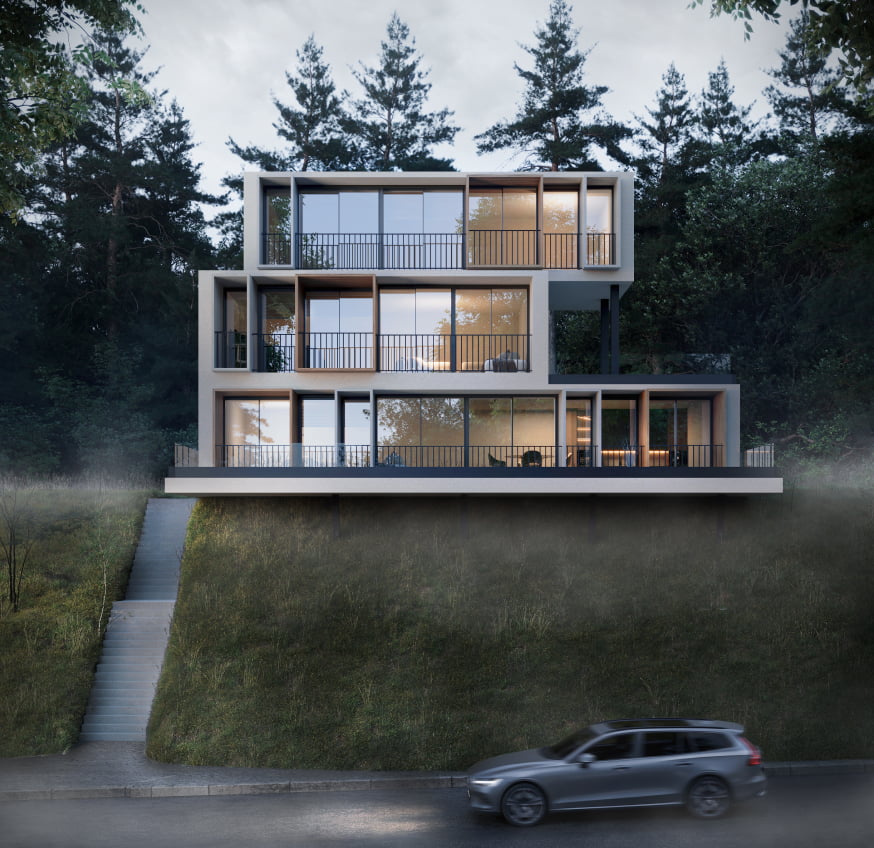Why 3D visualization for an architect


Connect for Architectural Visualization Services
 The prospect of calculating the cost of one’s own mistake from the architect’s or designer’s salary seems bleak. However, risks can be minimized. The prospect of losing a client due to misunderstandings or disagreements in the “stylistic” vision of the project can deprive one of guaranteed income. But this problem is solvable. Thanks to what? Thanks to the powerful tool of 3D visualization, which is now used in work not only by 3D artists who have been trained in the profession for several years.
The prospect of calculating the cost of one’s own mistake from the architect’s or designer’s salary seems bleak. However, risks can be minimized. The prospect of losing a client due to misunderstandings or disagreements in the “stylistic” vision of the project can deprive one of guaranteed income. But this problem is solvable. Thanks to what? Thanks to the powerful tool of 3D visualization, which is now used in work not only by 3D artists who have been trained in the profession for several years.
With its help, it is easier to find a common language with clients, demonstrating realistic renders instead of drawings or mood boards, and architects together with designers. They also give clients the opportunity to make informed decisions by offering several variations of “photocards” for one project. The “services” of 3D visualization are in demand among “artists” because they have several advantages that improve the quality of their work. Let’s delve into the details.
Minimum technical errorsMinimum technical errors
In the life of an architect, the scale of a catastrophe can be measured by the number of incorrectly placed sockets on a drawing, as well as incorrectly calculated centimeters of a door frame. In such cases, it is obvious: a person of average build will not fit into their own bedroom – and that’s bad. A guest will ask to charge their phone and leave “on empty” due to the inability to connect the device – also not good. Any unpleasant consequences will become the main reason for unforeseen expenses during the project implementation stage. It’s good if everything goes smoothly. But what if violations of construction norms and safety standards are caught off guard? Because of such a mistake in the “sketches”, you can tarnish your reputation and be remembered in a negative light.
The use of 3D visualization technologies in the work of an architect is a guarantee of quality. It allows for making changes during the project development, saving time and money in the future. And the good name of the architect, which is much more valuable.
For example, if the Tasman Bridge were built a decade later, when 3D visualization became a mass tool and advanced rendering programs opened up new possibilities for architects, Australia would never have known about the tragedy that occurred in the 20th century.
Although almost in the same period with the advent of personal computers and the growing power of 3D visualization, some unaccounted for “gusts” of wind by architects still remained a major cause of problems. An example of this is the Millennium Bridge, which closed two days after its opening. These numbers are not as shocking as the budget exceeded by 8 times allocated for its construction.
Clarity of the projectClarity of the project
An architect lives in a three-dimensional space of pencil drawings, on which the parameters of the height of the windowsill or the protrusion in the wall are “honored” in a strict order. A prepared client will read them and even understand any technical aspects, but at the same time will not always fully visualize the project. Neither black and white drawings, nor carefully compiled mood boards with notes and specific examples of furniture with references to the manufacturer will ever be able to draw a picture brighter than 3D visualization. It is even capable of capturing the atmosphere in which the client can immerse themselves.
Established communicationEstablished communication
An architect not only “builds” floor plans in 2D drawings but also establishes effective communication with the client, using 3D visualization to solve challenging tasks. For example, what’s wrong with reducing risks before the start of construction? It is enough to identify shortcomings and make the necessary adjustments. With this approach, the level of client dissatisfaction can be reduced to a minimum. Usually, building trust requires incredible effort. Getting a reprimand from someone who is indifferent to any changes is a matter of seconds.
For instance, imagine that an architect designed an airport terminal that became a real city landmark. However, due to changing times and a rapid increase in interest in air travel, the building became cramped. It ceased to fulfill its primary function due to an excess of passenger flow. It seemed like the end of an era and, along with it, the scalability of the project. As a caring specialist, you suggested covering the building with a “dome” to expand the space without compromising the integrity of the historical “monument.” However, not only the building turned out to be inflexible, but also the client, who envisioned a “buried alive” terminal and was horrified.
As an architect, you had already despaired because you had thought out a unique project of architectural optimization: you had planned waiting areas on paper, decided on the design of the check-in counters, chose both a restaurant and a regular café for public dining, and ensured safety by including several metal detectors in the drawing. In short, you had considered everything, except for the client’s wishes, who actually wanted to see a hotel project where rooms could be booked for a few hours between flights.
In such a situation, if you had renderings of several “proposals” right away, you would have definitely saved time, reaching an understanding with the client in record time. That’s why 3D visualization is important for architects.
Effective project managementEffective project management
Any architectural project, especially if it is large-scale (such as the construction of an airport), is usually integrated with an extensive database. This database contains all the information about each three-dimensional model, constituting a titanic effort. This method is called BIM (Building Information Modeling). It allows obtaining information about changes in the project, managing its deadlines, expenses, and other aspects. Moreover, all stakeholders can be in close interaction and “coordination”: from aviation bureaus to builders and even designers for the signage of “gates.” Architects are no exception here – they often have to solve a lot of “overtime” tasks. However, with the use of digital modeling, the number of these tasks can be crossed off the checklist “before lunch.” This technology allows visualizing and representing any part of the object in “volume,” and also helps architects reduce the number of misunderstandings and erroneous decisions at the final stage of the project. And, most importantly, it undoubtedly pleases – reduced timeframes.
“Consultation” for the client
“Consultation” for the client
The portfolio of architecture and design studios is a business card for a new client. The latter can be a well-known furniture manufacturer in the country or just an ordinary person who has decided to renovate an old apartment. The difference between them may simply lie in their “background” and the presence of specific experience in interacting with an architect.
The first client, for example, knows what he wants – a virtual tour to demonstrate his unparalleled high-quality gilded handles for a nightstand. In the technical assignment, he will clearly describe the idea and, perhaps, “attach” 3D models, knowing that this will significantly speed up the product development process.
The second client will doubt a lot and for a long time between art nouveau and art deco, putting them on par. Questions about the choice of laminate or parquet, curtains or blinds will completely shock him and cause migraines.
In such a case, 3D visualization will demonstrate its “healing” properties – it will have a noticeable effect, revealing the true desires of the client. Demonstrating several renders will help formulate his preferences, and he will leave satisfied with a clear vision of how his apartment should actually look after the cosmetic procedure.
In the era of technological progress, 3D visualization is an indispensable assistant for architects. Firstly, it guarantees improved visualization and creates a “wow” effect for the client. Secondly, it makes it easy to identify shortcomings in the structure of entire buildings and infrastructures. Thirdly, mutual understanding between the client and the architect reaches a qualitatively new level and reduces any risks in their interaction. And finally, efficient planning, resulting in ingenious solutions and minimal costs, has not disappointed anyone yet.
SHARE THIS...

Connect for Architectural 3D Visualization Needs
Our other articles
Get in touch
The art of 3D visualization is our passion. We specialize in a wide range of services to bring
your ideas to life. In our arsenal, we have architectural rendering, interior visualization, 3D product visualization, 360-degree panoramas, virtual reality (VR), architectural animation, rendering
for metaverses, and many other capabilities.
If you’re looking to elevate your business with stunning visualizations, simply fill out the form below. Our team will get in touch with you shortly to kickstart work on your project. Let’s collaborate to create visualizations that will amaze your clients and help you achieve your goals.
Contact us







